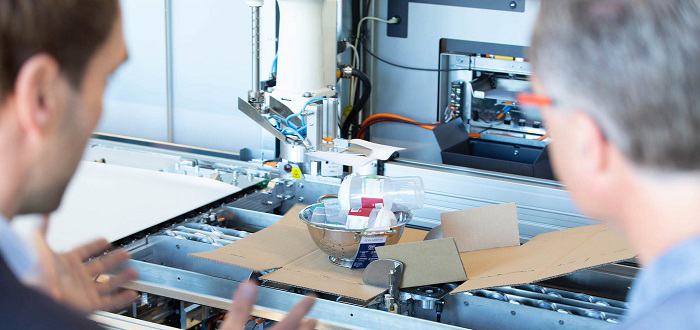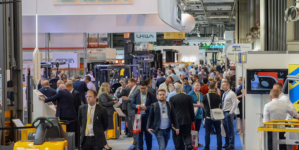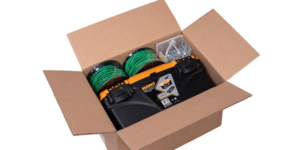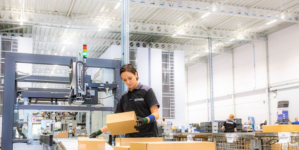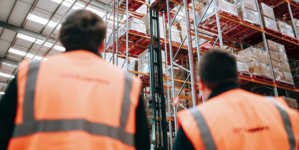-
Nutrivend selects Forterro’s Orderwise to support online expansion and streamline operations - April 11, 2025
-
ARROWXL LAUNCHES AMBITIOUS ZERO WASTE ROADMAP - April 8, 2025
-
THE BCMPA’S NEW CAMPAIGN DRIVES OUTSOURCING SUCCESS IN Q1 - April 7, 2025
-
BLACKOUT TECHNOLOGIES TARGETS TELEMATICS-INTEGRATED MOBILE DEVICE BLOCKING TO COMBAT SMARTPHONE DISTRACTION - April 1, 2025
-
Sparck Technologies awarded Royal designation - March 27, 2025
-
OpenADR Alliance announces first OpenADR 3.0 certified products with EVoke Systems, E.ON Energy and Universal Devices - March 25, 2025
-
Growing fulfilment and contract packer appoints new Managing Director - March 25, 2025
-
When is it time to invest in a WMS? Understanding the key trigger points - March 25, 2025
-
eCapital helps Vantage Recruitment on its journey to financial success - March 24, 2025
-
Hugo Beck Celebrates 70 Years of Packaging Innovation with Open House Events - March 20, 2025
Avoid the void
By Jo Bradley
Boxes, beads and bubble wrap provide hours of innocent enjoyment for kittens, puppies and small children but for grown-ups they are increasingly a cause of anxiety. It is said that on average every man, woman and child in the UK receives 140 cardboard boxes a year. Surveys consistently find many consumers – from 15% to 40% – who believe that online deliveries often arrive in boxes way too big for the items they contain, while a ‘Which?’ survey reports 48% of customers agree that “excessive packaging is one of the most annoying things about online shopping”.
Sustainability is a growing consumer concern. The same surveys show that many customers feel more positively about brands that are trying to reduce unnecessary packaging. At least the cardboard is seen to be recyclable – not so the bubble wrap and the polystyrene beads. Particularly baffling to consumers is when voids in the box are filled by even more cardboard boxes!
Oversize boxes aren’t just an annoyance to consumers. Without adequate dunnage in the voids, goods can be damaged in transit, and boxes become more susceptible to crush damage. Oversize boxes create unbalanced loads, causing back problems for warehouse and delivery staff, even when the overall weight of the package is quite low. Oversize boxes also waste transport space and delivery vehicles invariably ‘max out’ on volume long before they reach weight limits. Shipping empty space simply doesn’t make sense – it’s wasteful both environmentally and financially.
Society also pays. Companies that generate significant amounts of packaging are subject to Packaging Recycling Obligations (PRO), which means they either take their packaging back for recycling, or pay a fee in lieu. This raises £73 million a year in support of recycling efforts, but English local authorities estimate the cost to them of handling cardboard packaging is more like £700 million and rising: the Smithers PIRA consultancy predicts ecommerce packaging use to increase by 14.3% per annum over 2017-2022.
A National Audit Office report in July 2018 found ‘no evidence that the PRO system encouraged companies to minimise packaging’ but that may change. With a government Resources and Waste Strategy imminent, DEFRA officials are talking about ‘full cost recovery’ and some environmentally-minded MPs are advocating, in effect, a ‘cardboard tax’.
The January 2018 KPMG Retail Survey found that over half of consumers would be prepared to pay more for environmentally friendly packaging – but it doesn’t have to be that way. The technology now exists to create fit to size boxes for every consignment while improving throughput at packing stations and dramatically reducing a range of costs.
It comes in the form of CVP-500. This inline autopacker from Neopost sizes (using 3D scanning), constructs, tapes, weighs and labels each individual order – whether of individual or multiple items. With a cycle time as short as seven seconds a single operator can do the work of up to ten packing stations. Typically there is a 20% saving in the use of cardboard, and a complete elimination of void filling materials. Reductions in shipped volumes of up to 50% have been achieved. Packing errors are also reduced through check-weighing, invoices/returns labels automatically generated and included, and labelling can be integrated with automated carrier rate-shopping software.
So a packing line can achieve higher and more accurate throughput with fewer staff, major savings on packaging material costs, lower transport volume requirements, a minimised exposure to recycling obligation payments, lower consumer anxiety and a positive message on sustainability.
Of course, if you are a kitten, puppy or small child, you are really going to miss the bubble wrap and the polystyrene beads.
Jo Bradley is Business Development Manager for Automated Packing Solutions at Neopost Shipping. www.cvp-500.com



























